Economic crisis bites at Basel art fairs
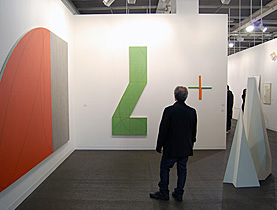
Basel is hosting the world's leading art fair and the excitement is palpable. But with a weakened economy, sellers are split over whether they should lower their prices.
Even before opening night, many booths displayed red dots indicating a sale had been completed and gallery dealers were engaged in agitated conversations with high value clients.
Of course, here the discussions are sometimes over multi-million dollar works. At WhiteCube, for example, Jay Jopling was so engaged with a client that when asked about the name of the artist of an unmarked work in the middle of the booth, he snapped, “I’m busy… Dinos and Jake Chapman.”
At Annemarie Verna Galerie, celebrating its 40th anniversary this year, and 28 years of uninterrupted annual participation in Art Basel since the fair’s founding in 1971, the mood was positive. The large booth was impressive, with major works by Robert Mangold and some by Richard Tuttle, among others.
“Our main goal is to make a beautiful exhibition, with strong works by important artists, regardless of price. We didn’t make any adjustments. We wouldn’t do that,” Gianfranco Verna, the gallery’s co-director, told swissinfo.ch.
“We have been present at Art Basel since the beginning and have seen all sorts of ups and downs in the market. So, now, we came prepared to not expect much, and we are pleased so far. Staying out of the fair was not even an option for us.”
Jean Fremon of Galerie Lelong in Zurich, which has been in operation for 60 years and has been a participant in Art Basel from the beginning, echoed that same philosophy.
However, Fremon admits that he understood that lowering his expectations also meant bringing work whose prices are adjusted for the market.
“Our mission has always been to exhibit the work of contemporary artists, and of course 60 years ago, it was a different group who were considered contemporary. We’re always changing our programme to reflect important contemporary artists, although we have kept some important estates, which don’t need as much promotion as the younger artists.”
Fremon said their price range this year was from €15,000 (SFr23,000) to about €250,000. The opening day of Art Basel was a success for Lelong.
Measured mood
Aside from Art Basel, there is Scope, a separate fair that prides itself on being the most cutting-edge and international. Here 90 galleries from only 20 countries were participating.
After weeks of problems with city permits and unsympathetic neighbours, Scope was finally able to pull it together, and it looked good. But the mood was more measured. Many gallerists were making discounts on work priced under €10,000 and some were saying that people came to Scope from Art Basel expecting the same discount of 20-30 per cent.
At Kashya Hildebrand Gallery, a contemporary art gallery that shows the works of artists mainly from the East (Russia, India, Pakistan, China, etc), a sale occurred as swissinfo.ch was talking to the staff. When asked if they had had to adjust their operations in light of the economic downturn, they said, “We are reconsidering our participation in some international fairs and cutting down our advertising budget substantially.”
Artrepco director Andrea Hinteregger was showing the work of Eiko Grimberg and Arthur Zalewski at the Volta fair. She said that although people are much more cautious now and consider longer before buying, if they like a piece, the price is not very significant. The works she sells are priced between €1,000 and €25,000.
The idea of “cautious buyers” was repeated a few times at Volta, a rather new fair, co-founded by Kavi Gupta, Friedrich Loock, and Uli Voges. Although gallerists were enthusiastic about the venue and the event, many adopted a wait and see approach and some even went so far as to say that even if they didn’t make up their costs entirely, they would make interesting connections that would further the careers of their artists.
Artists in mid-price ranges, like the ones at Volta and Scope, they said, were the most hit by the economic situation.
Uneven sales
People going to the satellite fair Liste in search of low prices would probably be surprised. Although billed as the “Young Art Fair in Basel”, many galleries represented artists with years of international exhibiting experience, whose work could be found also at Scope, Volta and even Art Basel.
Sales here were uneven. A small 6×9-inch painting in one gallery asked as much as €20,000 and when asked if they were making discounts to interested buyers, the answer was, “No, we find it entirely unprofessional to discount the work. It is what it is worth, and devaluing it due to the economic situation does not work for anyone.” By Thursday, the gallery had not sold it, nor other pieces they had come with.
If the economic crisis is not clearly reflected in the fairs at Basel, what is interesting is that many galleries chose not to take part in any of them. Zurich based gallerist Ute Barth, from Art Forum Ute Barth – with a range of important modern artists like Francis Bott, Pierre Alechinsky, Alexander Calder, but also contemporary artists – chose to stay out this year.
“[This year] we had to examine the situation, and my conclusion was not to go to the big fairs. The expenses are enormous and sales [to cover costs] can’t be expected. We are waiting [to see] how the world economic situation will be next year.”
“[For the moment] we stay here and focus on our main business: connecting art and buyers, doing good shows in the gallery and assisting our clients.”
Olga Stefan in Basel, swissinfo.ch
The main art fair in Basel is Art Basel, which was started in 1971. This year it takes place June 9-14.
Around Art Basel are other fairs that started to operate at different times, materializing on the its success and visitation. They offer alternative perspectives on the mainstream art market.
SCOPE was started in 2002, and also takes place in New York in conjunction with the Armory Show, in Miami during Art Basel Miami, in East Hampton, and in London. It focuses on mid-range galleries, with an international reputation, and also hosts artist projects funded through its foundation. (www.scope-art.com)
VOLTA was started in 2004 and has relocated this year to the Markthalle. Participating galleries include emerging and more established galleries, as well as artist projects. Galleries from eastern Europe had a strong presence here.
LISTE is the longest running satellite fair in Basel, established in 1995 as a complement to Art Basel. It features young galleries exhibiting young artists, with special focus on countries on the margins.
HOT ART is a young art fair that focuses on artists that have previously not had exposure to the European art market, thus most participants are from Latin America and Asia.

In compliance with the JTI standards
More: SWI swissinfo.ch certified by the Journalism Trust Initiative
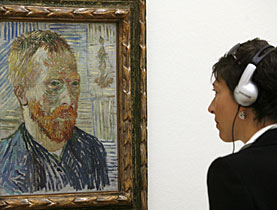
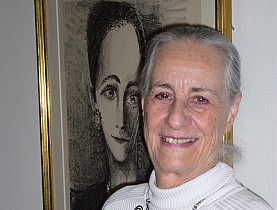
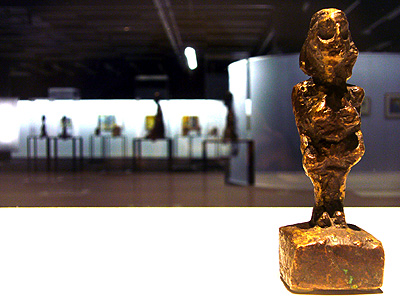
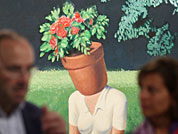
You can find an overview of ongoing debates with our journalists here. Please join us!
If you want to start a conversation about a topic raised in this article or want to report factual errors, email us at english@swissinfo.ch.